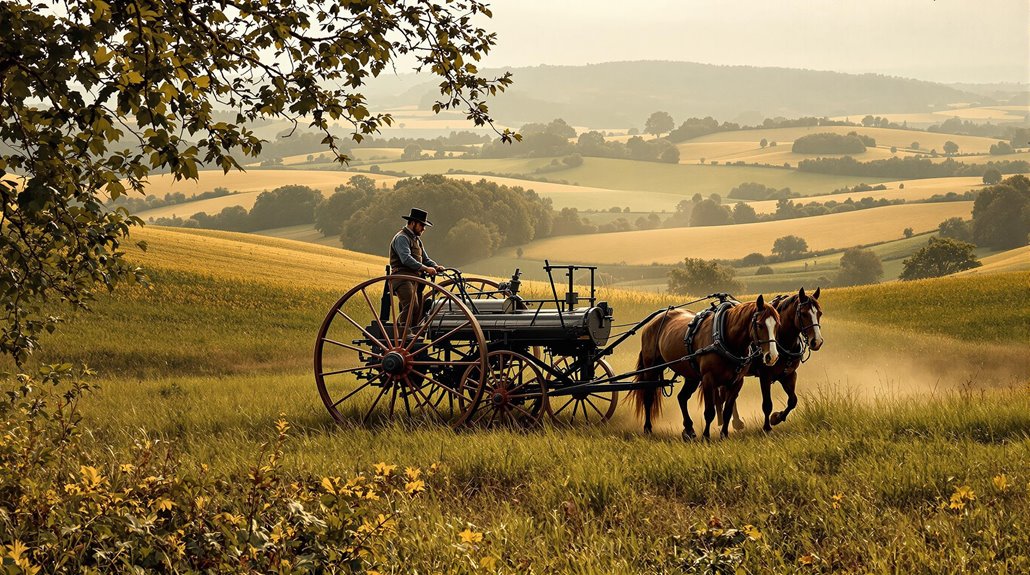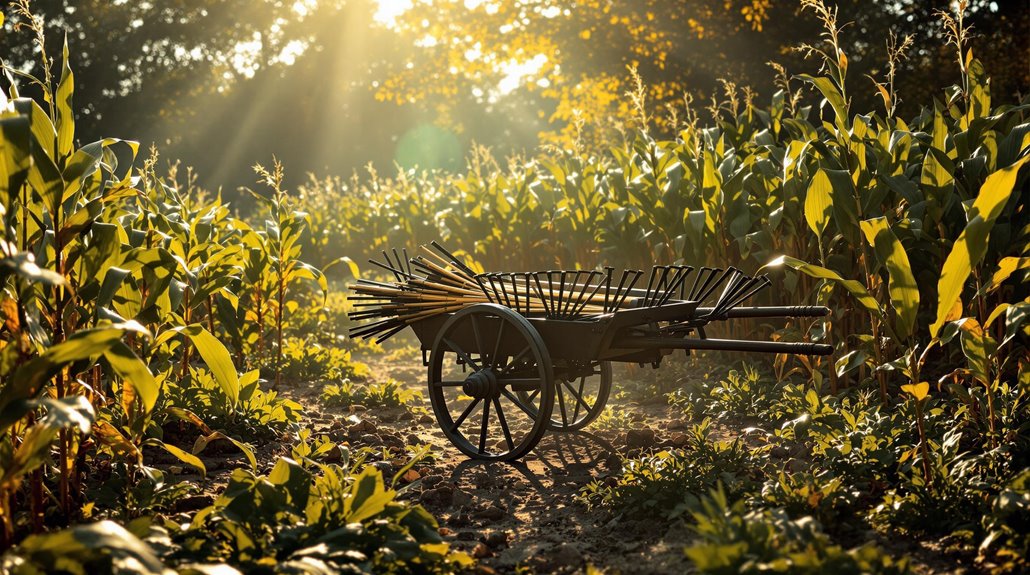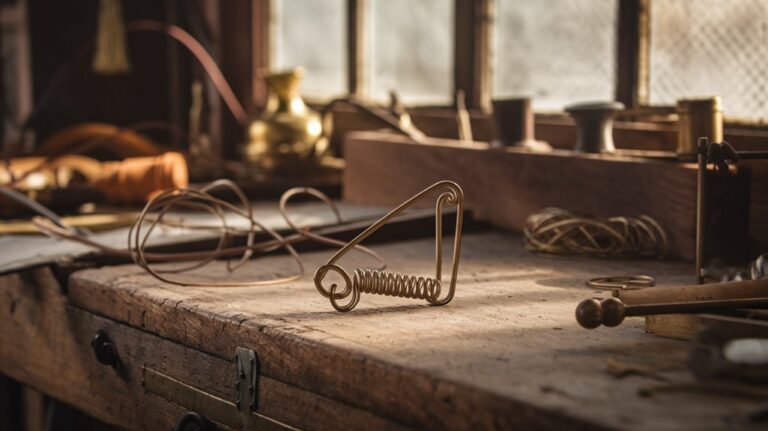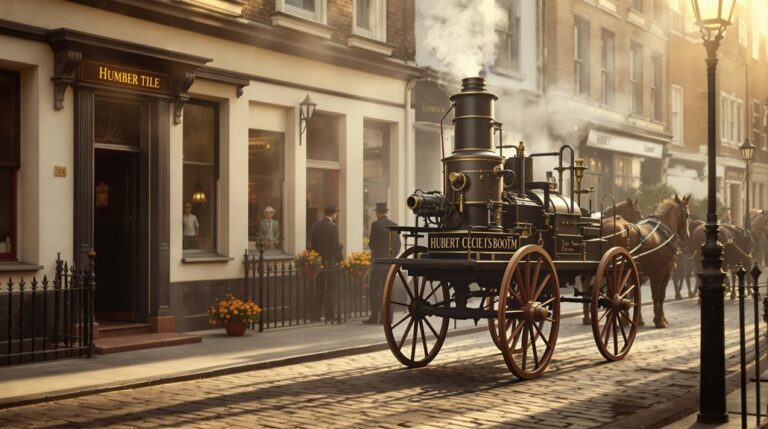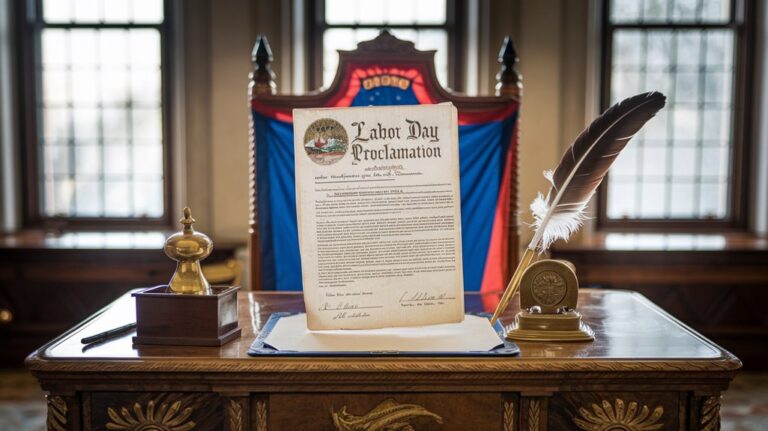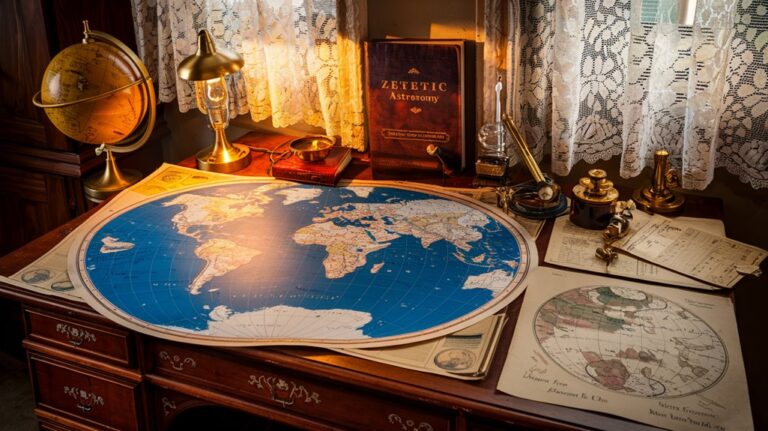Henry Blair’s Corn Planter: A 19th-Century Genius Overcoming All Odds
Just as you might push a wheelbarrow through your garden today, Henry Blair pushed the boundaries of agricultural innovation in 1834. You've probably never heard of this remarkable inventor, yet his corn planter revolutionized farming at a time when few African Americans could even obtain patents. Despite being illiterate and facing severe societal restrictions, Blair's ingenuity created a device that did the work of eight men. There's more to this inventor's story than meets the eye.
Breaking Ground: Henry Blair's Early Life in Maryland
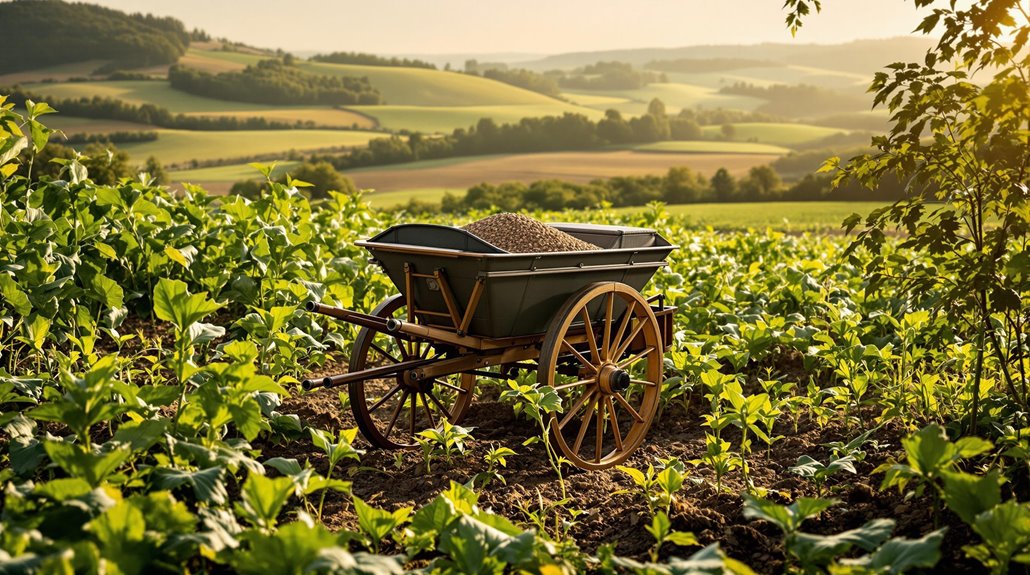
While many details of Henry Blair's early years remain unknown, this groundbreaking African American inventor was born in Glen Ross, Maryland in 1807. Unlike many African Americans of his time, Blair wasn't enslaved and managed to establish himself as an independent farmer in his hometown community.
Blair's early influences came primarily from his agricultural background, where he spent most of his formative years learning the intricacies of farming. Despite being unable to read or write, he received enough community support to operate his own farming business successfully. His inability to write was evident as he had to mark his patents with an X when signing the official documents. His dedication to improving farming methods led him to create machines that could save the labor of eight men.
You'll find it remarkable that he overcame the era's social barriers, becoming only the second African American to receive a U.S. patent. His status as a free man in pre-Emancipation Maryland gave him opportunities that were sadly denied to many others.
The Spark of Innovation: From Farmer to Inventor
Through years of hands-on farming experience, Henry Blair understood the backbreaking labor and inefficiencies that plagued 19th-century agriculture. His innovation journey began as he witnessed farmers struggling with labor-intensive planting methods, high costs, and weather-dependent harvests. As the second Black patent holder in U.S. history, Blair's achievements were groundbreaking.
Blair's firsthand experience with agricultural challenges led him to envision a mechanical solution that would revolutionize corn planting. You can trace his inventive spirit to his practical approach: observing existing farm tools and identifying ways to improve them.
He focused on creating a wheelbarrow-style planter that would speed up the planting process while reducing manual labor. The innovative design could save the work of eight laborers' efforts.
Despite being illiterate, Blair didn't let this obstacle deter him. He channeled his farming expertise into developing a horse-drawn corn planter that would transform planting efficiency and inspire future generations of inventors.
Revolutionizing Agriculture: The Corn Planter Patent
In a landmark achievement for agricultural innovation, Henry Blair secured Patent Number X8447 for his corn planter on October 14, 1834, becoming the second African American to receive a U.S. patent.
Despite being illiterate and signing his application with an "X," Blair's ingenuity shone through in his revolutionary design.
His corn planter dramatically improved agricultural efficiency by performing the work of eight men. You'll appreciate how this invention enhanced seed placement accuracy and depth control while creating a checkerboard planting pattern that made weed control easier. His pioneering device featured a wheeled frame with drills that revolutionized planting methods.
The timing couldn't have been better – as America's population expanded westward and railroads emerged, farmers needed ways to increase their crop yields. Blair's invention helped them meet growing market demands, proving particularly valuable during the nation's rapid development and increasing food requirements.
Born in Maryland, Blair spent his life in Glen Ross farming community, which later became part of present-day Silver Spring.
Engineering Excellence: How Blair's Planter Worked
The brilliant engineering behind Blair's corn planter showcases how simple mechanics can solve complex agricultural challenges.
The mechanical design, resembling a wheelbarrow, featured an innovative chamber for seed distribution that operated as the planter moved across fields.
Despite facing limited educational opportunities, Blair demonstrated remarkable ingenuity in developing his agricultural innovations.
You'll find the genius in its automated operation: as horses pulled the device forward, a wheel-driven cylinder released seeds at precise intervals into furrows.
The attached rakes would then cover the planted seeds and level the soil in one smooth motion.
What's remarkable is how Blair's design could maintain consistent depth and spacing while creating a checkerboard pattern that made weed control easier.
This efficiency meant you'd accomplish the work of eight men with just one operator, revolutionizing corn planting through ingenious mechanical simplicity.
The invention was so significant that it earned Blair Patent No. X8447, marking a historic achievement in agricultural innovation.
Beyond Corn: The Cotton Planter Breakthrough
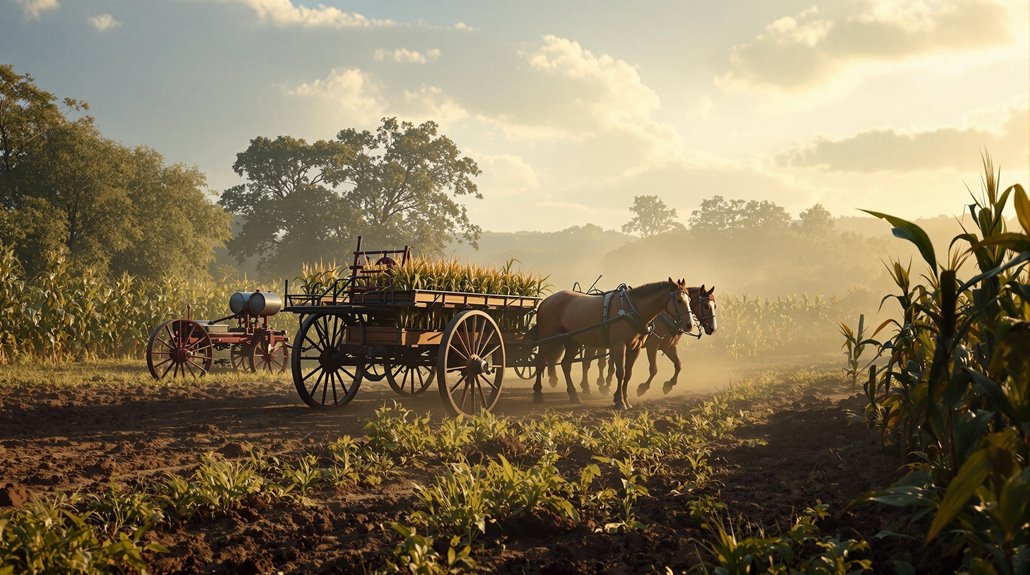
Building on his success with corn planting, Blair developed an equally revolutionary cotton planter that transformed Southern agriculture. His second patent showcased remarkable advancements in cotton cultivation, featuring innovative shovel-like blades and a wheel-driven seed distribution system. Being unable to write, Blair signed his groundbreaking patent with just an X. His dedication to agricultural innovation contributed to making Thanksgiving harvests more abundant for future generations.
You'll appreciate these groundbreaking features that revolutionized agricultural efficiency:
- Adaptable design for various soil conditions
- Precise seed placement through mechanical distribution
- Reduced labor requirements by replacing multiple farmhands
- Enhanced weed control capabilities
- Increased planting speed and coverage area
Blair's cotton planter arrived at a vital time when the textile industry's demands were soaring. Despite being illiterate and working in an era of significant social barriers, his invention demonstrated remarkable engineering prowess.
The machine's ability to split ground, deposit seeds, and improve overall farm productivity made it an invaluable tool for expanding cotton production across the South.
A Lasting Agricultural Legacy: Impact Through the Ages
Henry Blair's inventions proved far more consequential than their immediate impact on farming practices. His corn planter's legacy extends through generations, influencing sustainable farming methods and agricultural education even today.
Living as a independent farmer in Maryland, Blair understood firsthand the challenges of manual planting, which drove him to create his revolutionary device.
Despite being completely illiterate, Blair managed to secure two groundbreaking patents that changed agriculture forever.
You'll find his innovations reflected in modern mechanized farming techniques, which continue to build upon his original eight-fold increase in planting efficiency.

